Why Choose a Pilates Machine for Full-Body Training?
The Pilates reformer—a dynamic and versatile piece of equipment—has become a go-to tool for full-body conditioning. Using a system of springs, pulleys, and a gliding carriage, the Pilates machine supports both resistance and assistance-based training.
Unlike traditional workouts that often isolate muscles, Pilates exercises focus on functional movement, engaging multiple muscle groups at once. This not only tones the body from head to toe but also improves posture, flexibility, and core strength.
Key Benefits of Full-Body Pilates Machine Workouts
-
Low-Impact, High-Results: Great for all fitness levels, including injury rehab.
-
Strength + Flexibility: Builds lean muscle while improving mobility.
-
Core-Centric Training: Every movement begins from the center, enhancing balance and spinal health.
-
Customizable Resistance: Springs allow you to increase or decrease challenge level as needed.
The Ultimate Full-Body Routine Using a Pilates Machine
The following exercises are categorized to target each major area—arms, legs, abs, and back—using only the Pilates reformer.
1. Arms – Long Stretch Series
🔹 Exercise: Long Stretch
How to Do It:
Start in a plank position with hands on the footbar and feet on the shoulder rests. Engage the core and glide the carriage back slowly, then forward.
Muscles Worked:
-
Shoulders
-
Triceps
-
Chest
-
Core
Benefits:
-
Builds upper body strength
-
Stabilizes shoulders
-
Enhances control and endurance
Modification: Lower spring resistance for beginners to reduce tension on the shoulders.
2. Legs – Footwork on the Reformer
🔹 Exercise: Parallel Heels & Toes
How to Do It:
Lie on your back with feet on the footbar in parallel position (heels or toes). Push the carriage out, extend your legs, then return with control.
Muscles Worked:
-
Quadriceps
-
Hamstrings
-
Glutes
-
Calves
Benefits:
-
Strengthens lower body
-
Improves joint alignment
-
Encourages symmetrical engagement
Tip: Avoid locking the knees when extending legs.
3. Abs – Coordination
🔹 Exercise: Coordination
How to Do It:
Lying down on the carriage, hold straps in your hands with legs in tabletop. Exhale to lift head, extend arms and legs out, then bend both back in.
Muscles Worked:
-
Rectus abdominis
-
Obliques
-
Deep transverse core
Benefits:
-
Engages deep abdominal muscles
-
Improves timing and control
-
Supports pelvic stability
Tip: Keep the neck relaxed and the movement smooth.
4. Back – Pulling Straps
🔹 Exercise: Pulling Straps (with Long Box)
How to Do It:
Place the long box on the reformer. Lie face down with chest slightly off the edge. Hold the straps in both hands and pull them straight back as you lift the chest.
Muscles Worked:
-
Upper back
-
Lats
-
Mid-trapezius
-
Spinal erectors
Benefits:
-
Strengthens postural muscles
-
Counteracts rounded shoulders
-
Improves spinal extension
Modification: Lower the spring resistance for smoother control.
Bonus – Integration Movement: Elephant Stretch
How to Do It:
Stand on the carriage with hands on the footbar and feet on the platform. Keeping legs straight and back flat, press the carriage out using your hips, then return.
Target Areas:
-
Hamstrings
-
Calves
-
Shoulders
-
Core
Benefits:
-
Improves flexibility and coordination
-
Reinforces control through the posterior chain
-
Combines stretch with strength
Full-Body Weekly Routine Example
Day 1 – Strength Focus:
-
Footwork (Legs)
-
Long Stretch (Arms)
-
Pulling Straps (Back)
-
Coordination (Abs)
Day 2 – Recovery + Flexibility:
-
Elephant Stretch
-
Feet in Straps – Leg Circles
-
Roll Down with Back Stretch
Day 3 – Endurance Circuit:
-
Long Stretch Series
-
Footwork Series
-
Coordination
-
Pulling Straps
-
Standing Side Splits
Tips for Maximizing Your Reformer Workout
-
Start with Core Engagement: Every movement starts from the center. Engage your abs and pelvic floor to protect your spine.
-
Control Over Speed: Pilates emphasizes mindful, controlled movement. Slower reps = better results.
-
Breathe with Intention: Inhale to prepare, exhale to move—especially during exertion.
-
Adjust Springs Accordingly: More springs = more resistance (and sometimes more stability). Less = more core engagement and control.
-
Stretch After Each Session: Use the reformer to release tight muscles and promote recovery.
Conclusion: One Machine, Limitless Possibilities
With a single Pilates machine, you can effectively target every major muscle group while improving your posture, mobility, and overall strength. These Pilates exercises offer a holistic, low-impact workout ideal for anyone—from fitness beginners to advanced practitioners.
What sets this workout apart is the blend of precision, flow, and breath—all performed on a sleek and functional reformer. Whether you're building your home gym or running a commercial studio, investing in a quality Pilates machine opens the door to endless full-body training options.

